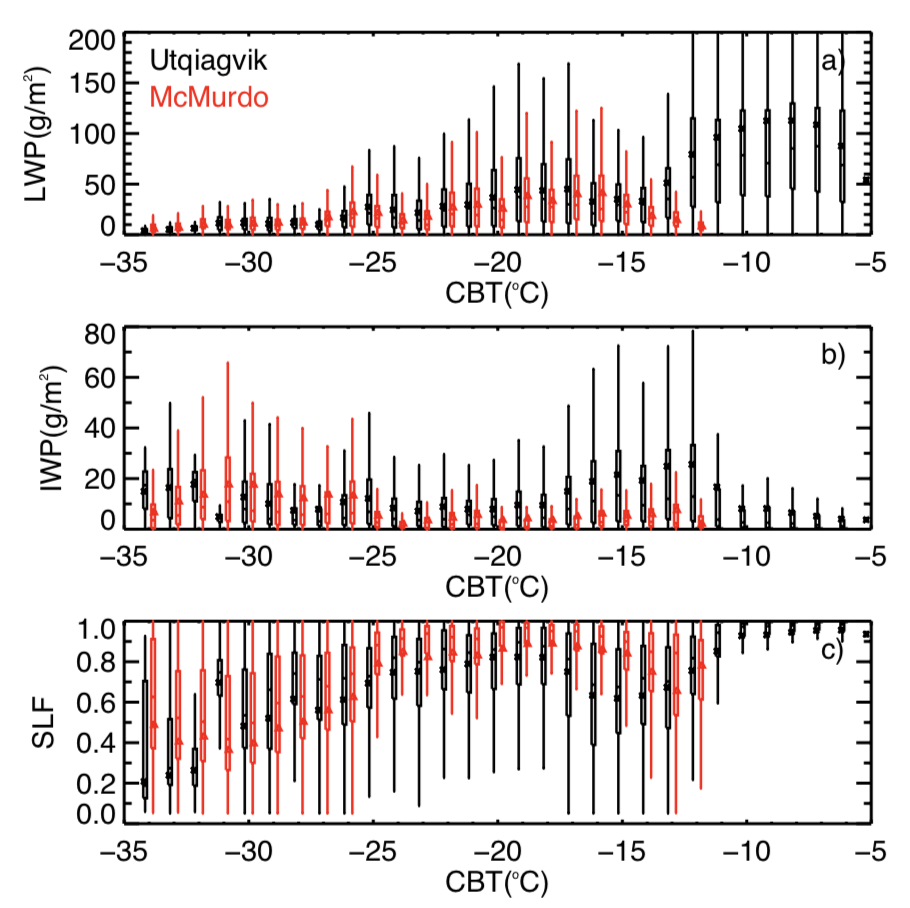Comparing antarctic and arctic stratiform mixed-phase clouds
Submitter:
Zhang, Damao — Pacific Northwest National Laboratory
Vogelmann, Andrew M. — Brookhaven National Laboratory
Area of research:
Cloud Processes
Journal Reference:
Science
Stratiform mixed-phase clouds—composed of a mixture of ice particles and liquid droplets—are prevalent at high latitudes and greatly impact the regional energy balance. However, climate models have difficulty simulating these clouds and need new observations for improvement. A new analysis compares polar mixed-phase cloud properties from an arctic and an antarctica site, spanning a wide range of environmental conditions.
Impact
Comparison of antarctic and arctic stratiform mixed-phase cloud properties reveals notable differences, which might be related to the differing amounts of turbulent mixing and atmospheric aerosol particulate concentrations. These observational findings can be used to test model simulations of polar stratiform mixed-phase clouds.
Summary
Atmospheric Radiation Measurement (ARM) ground-based remote-sensing measurements of mixed-phase cloud properties are compared from McMurdo Station, Antarctica, during the ARM West Antarctic Radiation Experiment (AWARE) campaign, and from the Utqiaġvik site in Northern Alaska. Single-layered, stratiform mixed-phase clouds at McMurdo are higher and colder, and have thinner liquid-dominated layer depth, thicker ice layer depth, and smaller liquid water paths than at Utqiaġvik. These clouds at Utqiaġvik usually occur within the boundary layer, but at McMurdo they are often well above the boundary layer, suggesting that their maintenance mechanisms could differ. The fraction of cloud mass composed of supercooled liquid (SLF) decreases as temperature decreases but with some nuances. SLFs are dramatically lower at temperatures close to ‑15 °C where planar crystals grow quickly, suggesting that temperature-dependent growth regimes of ice habits play an important role in the liquid/ice mass partitioning in mixed-phase clouds. SLFs at McMurdo tend to be greater than at Utqiaġvik for a given temperature warmer than ‑25 °C because clouds at McMurdo have smaller ice water paths. This difference might be related to differing aerosol concentrations and chemical compositions between the two sites.


